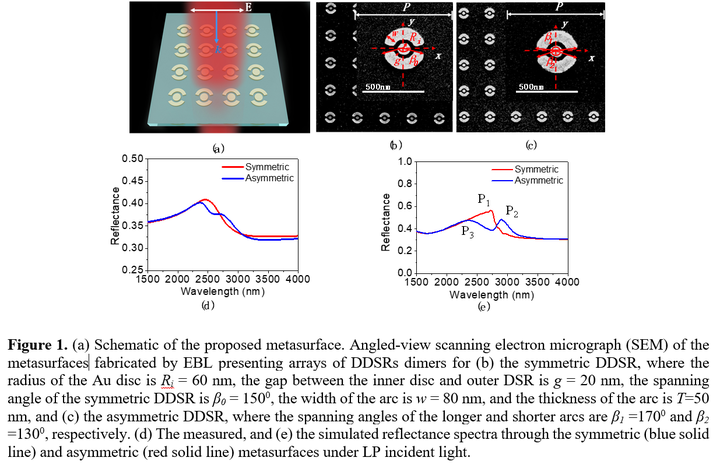Metamaterials 2012
 Results summary
Results summaryProject of Professor R. E. Simpson (Singapore University of Technology and Design, Singapore) Separating enantiomers is vital in chemical syntheses, life sciences and physics. However, the usual chemical processes are inefficient. Recently, plasmonic nanostructures have drawn considerable attentions for manipulating nanoparticles; but only a few approaches have been proposed to discriminate between entities that differ in terms of their handedness. This is because the chiral polarisability is much smaller than the electric polarisability, and therefore the non-chiral gradient force dominates over the chiral gradient force. This limit means that the enantioselective sorting of chiral nanoparticles is a formidable challenge. In view of this, we experimentally and theoretically describe a strategy to markedly enhance the chiral gradient force on the paired enantiomers using dipole-octupole (DO) Fano resonance (FR). Here, we experimentally demonstrate that the DO-FR arises from a metasurface composed of a disc-double split ring resonators with broken symmetry. The experimental findings are supported by a theoretical analysis that shows the coaxial channel of the resonator possessing high chirality density gradients around the DO-FR. This provides an enhanced chiral gradient force that dominates over the non-chiral gradient forces on sub-10 nm chiral nanoparticles. Enantiomeric pairs can thus experience distinct potential wells in terms of signs, i.e. one sign is captured in a deep trap potential, while the other is pushed by a high potential barrier. Our proposal of an FR-enhanced chiral gradient force using an asymmetric metasurface may potentially advance the techniques of enantiopurification and enantioseparation, bringing a new perspective to state-of-the-art all-optical enantiopure synthesis.